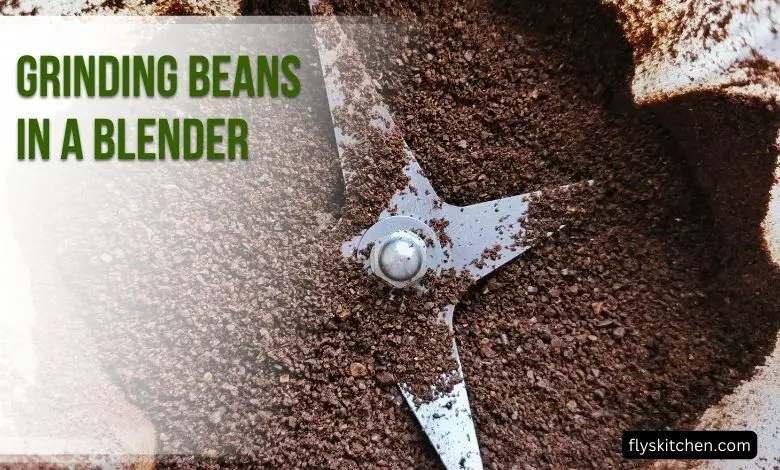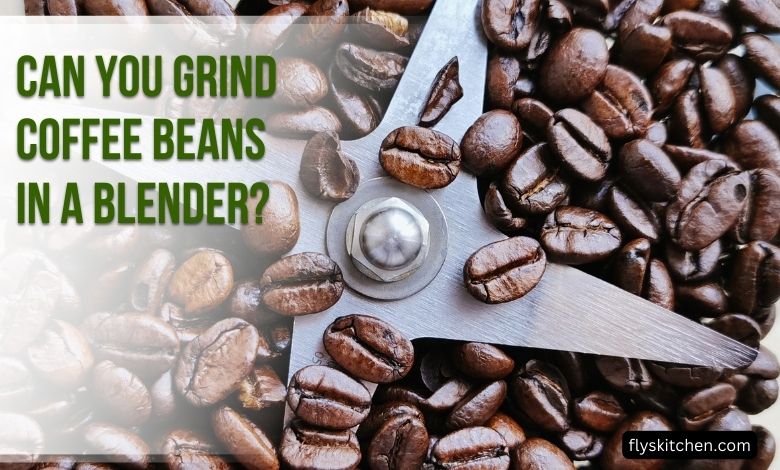For coffee aficionados, achieving the perfect grind size is essential for optimizing coffee flavor and aroma. While coffee grinders are specially designed for grinding beans uniformly, many home cooks wonder if they can skip buying another appliance and simply use their blender. Blenders are significantly more affordable and readily available in most households. But can you really get a high-quality coffee grind from this multi-purpose kitchen tool?
Contents
What Happens When You Grind Coffee Beans In A Blender?
Blenders operate differently than burr or blade coffee grinders. They utilize dull, blunt blades that chop and smash ingredients by spinning at incredibly fast speeds. Burr grinders, whether manual or electric, use two burrs that crush the beans between them. The burrs produce a very consistent grind size. Blade coffee grinders work in a similar way to blenders, but the blunt blades are specifically designed to pulverize the beans into small, even particles.
When you grind coffee beans in a regular blender, the results will be extremely inconsistent. The blender blades will likely pulverize some beans into a super fine powder while leaving others in large, uneven chunks. Without adjustable settings, you can’t control the size or uniformity of the grind. The blender is also unable to generate the high revolution per minute (RPM) speeds needed to finely and evenly grind coffee beans. Most blenders max out at around 20,000 to 28,000 RPMs while a quality burr grinder reaches 150 to 1,500 RPMs.
While it may seem counterintuitive, slower speeds are better for achieving an even coffee grind. The slower burrs provide more control and uniformly grind each bean one by one. The ultra-fast speeds of a blender cause an uneven impact across the beans.
Downsides Of Grinding Beans In A Blender

- Produces an inconsistent grind – Beans will be randomly pulverized into fine powder and large chunks.
- Alters flavor – Uneven grinds lead to over or under-extraction, resulting in weak or bitter coffee.
- Can damage blender – Coffee beans are very hard and abrade motor blades over time.
- Makes a huge mess – Grounds fly everywhere and stick inside the blender jar.
- Not suitable for coarse grinds – Unable to achieve uniform coarseness needed for French press or cold brew.
While it may be tempting to grind beans in a blender to save money and time, the resulting coffee will likely be disappointing. Here are some of the downsides:
Impacts Extraction And Flavor
An inconsistent grind size makes it difficult to properly extract all the delicious oils and flavors from the coffee beans. Over-extracted fine powder brings out bitter flavors, while the large chunks will be under-extracted leading to a sour, weak taste. No matter how you brew it, coffee ground in a blender will not have an optimal flavor.
Not Well-Suited For All Brew Methods
Certain coffee brewing methods require specific grind sizes to work properly. For example, coarse grinds are a must for French press and cold brew. The uneven chunks produced in a blender cannot achieve the proper coarseness. The coffee will end up over-extracted and murky with fine sediment.
Can Damage Motor And Blades
Coffee beans are quite hard and dense. Their texture can quickly dull regular blender blades which are designed for softer foods. The beans may also put a strain on the motor over frequent use. This could shorten the lifespan of your blender.
Makes A Mess
When grinding coffee, grinds tend to fly up and stick to the inner surface of the grinding chamber. In a blender, the grounds will go everywhere, making a sticky mess. It can be difficult to clean them all out of the blade assembly and threads.
Loud Noise And Vibration
With no enclosure around the grinding blades, using a blender to grind coffee can be extremely loud. The high-pitched noise and vibrations are unpleasant so early morning coffee grinding will be disruptive. Burr and blade coffee grinders run much quieter in comparison.
Alternative Appliance Options
If you don’t want to buy a designated coffee grinder, there are some other appliance alternatives to consider:
- Spice or Nut Grinder – Compact electric grinders designed for spices, seeds, nuts, and herbs can also grind beans. Models under $20 are available.
- Food Processor – Good for coarse grinds like for cold brew or French press. The thick, blunt blades create an uneven grind inappropriate for drip coffee.
- Mortar and Pestle – The original manual grinder! It takes serious time and elbow grease but can produce any coarseness.
- Rolling Pin – Place beans inside a sealed bag then roll with a pin to crush into coarse pieces. Super inconsistent but usable in a pinch.
Tips For Grinding Beans In A Blender
While a blender is far from ideal, you can take some steps to improve your results if it’s your only option:
- Grind in very small batches – No more than 1⁄4 cup at a time.
- Use the pulse setting – Short bursts of power provide more control.
- Shake blender jar between pulses – Redistributes beans for even grinding.
- Grind for espresso – Finer grinds work better in a blender than coarse.
- Sift grounds after grinding – Removes the largest uneven chunks.
- Avoid overfilling blender – Beans need room to move around.
- Clean thoroughly after each use – Grounds get stuck under the blades.
FAQ About Grinding Coffee Beans In A Blender
Here are answers to some frequently asked questions about using a blender to grind coffee beans:
What setting should I use to grind beans in a blender?
Use the pulse setting in short bursts. This gives you more control than letting it run continuously on a puree or liquefy setting.
Should I grind beans wet or dry in a blender?
Always grind them completely dry. Adding any moisture will turn them into a gummed-up paste.
How long does it take to grind beans in a blender?
It takes around 1-2 minutes total grind time when working in small batches and using brief pulses. Expect to double that if using a mortar and pestle.
Can I grind coffee beans in a personal blender?
Yes, but fill it less than halfway due to the smaller capacity. Expect to grind for longer working in tiny batches.
Is it bad to grind beans in a blender every day?
Frequent use will likely dull blades faster. Plan to replace the blades or the entire blender sooner than normal.
Should I buy a cheap coffee grinder or blender for grinding?
A basic blade coffee grinder costs a similar amount and will produce better quality grinds.
The Bottom Line
While it may be convenient to grind coffee beans in your trusty blender, the inconsistent results will hamper your ability to brew delicious coffee. Uneven grinds lead to under and over-extraction which negatively impacts flavor. For the best-tasting coffee, invest in an inexpensive burr grinder or blade coffee grinder. Or opt for alternate appliances like a spice grinder or food processor if you plan to grind beans infrequently. With a quality, uniform grind, you’ll be sipping amazing coffee in no time.

